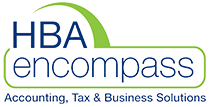The QBCC, the Queensland Business and Construction Commission love them or hate them. I’m not going to get into a debate about that today. But if you are registered with them, then you need to provide them every year, generally 31st of December or 31st of March, a full set of financial statements. If you want to increase your turnover limit, or you’re applying for a new application, you also need to give them a full set of financial statements. Now, up until last week, the QBCC had some pretty nasty rules. They weren’t what were called general purpose financial statements, which are kind of like the financial statements that BHP sends out. These reports don’t give you much information and you have to understand the next 85 pages of notes behind it. All these notes that are really, really confusing.
Now, I don’t understand why they wanted them. The contact from the QBCC told us is because that was what was in the legislation and they couldn’t change but last week, thank goodness, they changed the rules. So now we can prepare what’s called Special Purpose financial statements.
Special Purpose financial statements and what we prepare for you normally, although there’s a few extra things that we have to add in for the QB CC, so they can tick the boxes and check their ratios. Normally a trading statement, a profit and loss, a balance sheet, a cash flow statement, age payables age receivables. So what’s different in this to what we do normally? And the question is, why do we have to do it?
Firstly, we need to make sure that your assets and liabilities are all in the right areas. Current versus non-current. Current means it’s something that you’re going to do or use or pay in the next 12 months. Non-current means it’s longer than 12 months. In English, this means if you have loans for vehicles, excavators equipment, then we need to class 12 month worth of repayments as a current liability, and the rest as a non-current liability. Due to changes in accounting standards, accountants haven’t had to do this, for a long, long time- I did back way in the day when I was a junior, but that was like eons ago. The majority of accountants put all equipment loans a non current liabilities because it makes it easier to read for small business owners – all the loans are in one place.
As mentioned above, for the QBCC reports, we need to split them into Crrent and Non-Current. The reason we do that is so they can see their current ratios really easy. A Current Ratio is a way of seeing the ability of a business to pay what is due, it helps to assess solvency. It is: Current assets divided by current liabilities.
Then we need to produce a set of cash flows. This shows us where the money came in from and where the money went out from the business. Most of us would look at the profit and loss on the balance sheet and work that out but the QBCC want to take a shortcut. That’s cool, we can do that.
Then there’s age receivables and age payables. The reason the QBCC want them is to make sure that a you’re paying people on time because part of the QBCC’s role is to make sure that that builders pay subbies. So that’s why they have aged payables. Age receivables, when they’re doing their ratios, if you’ve got some clients that owe you money, that’s more than 90 days old, they won’t count it, which is a bit cruel, particularly when there’s perhaps invoices that are being sent subject to retentions or invoices that are that are in dispute, they won’t count them. For that reason, if there are retentions, we often move them to a retention account which can be a split of current and Non-Current depending on when the retentions are due, leaving them out of Aged Receivables.
Unfortunately, it means we do provide a slightly separate set of financial statements for them. Normally we will create a set for you that makes sense to you without the extra stuff and then tweak them to meet the QBCC rules, unfortunately there is a small cost for the time involved but generally it’s not a big drama.
Any QBCC questions, feel free to reach out.

